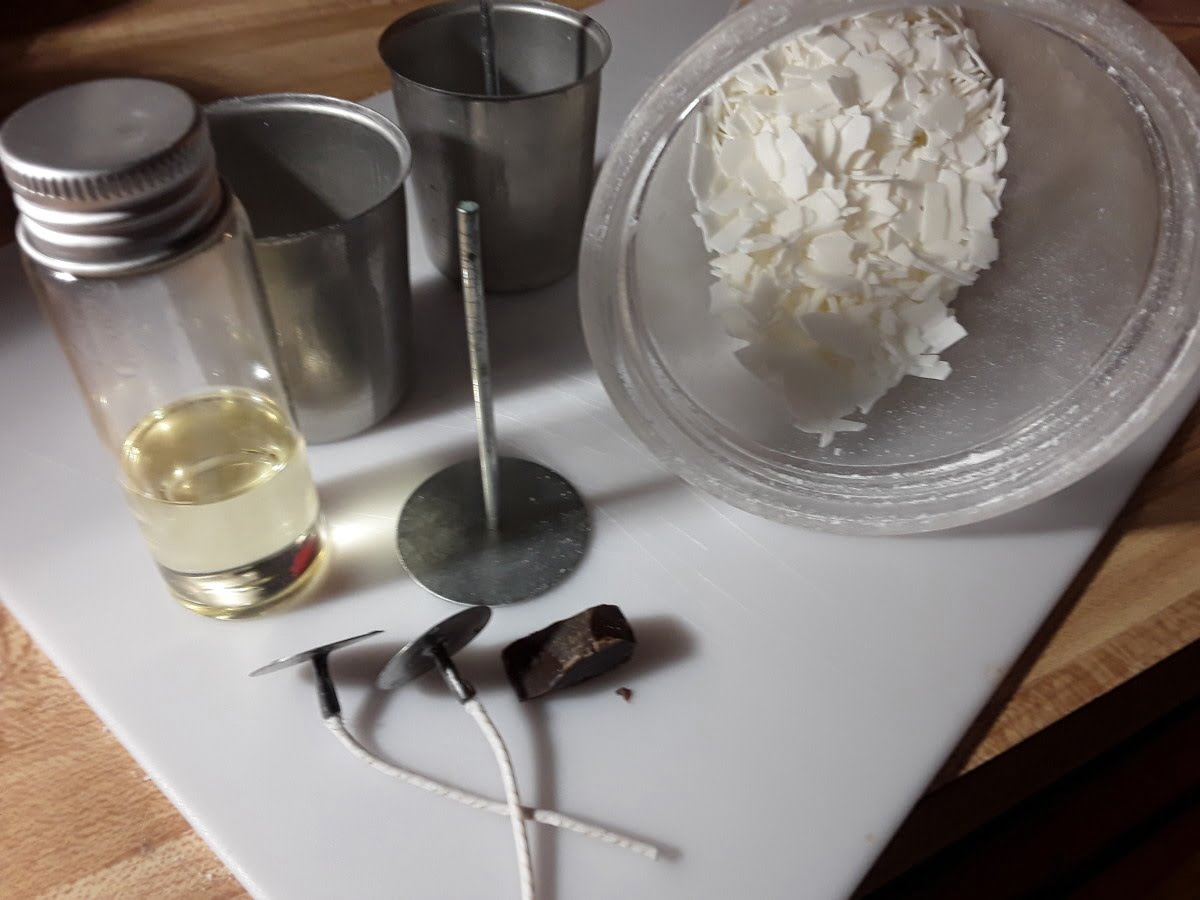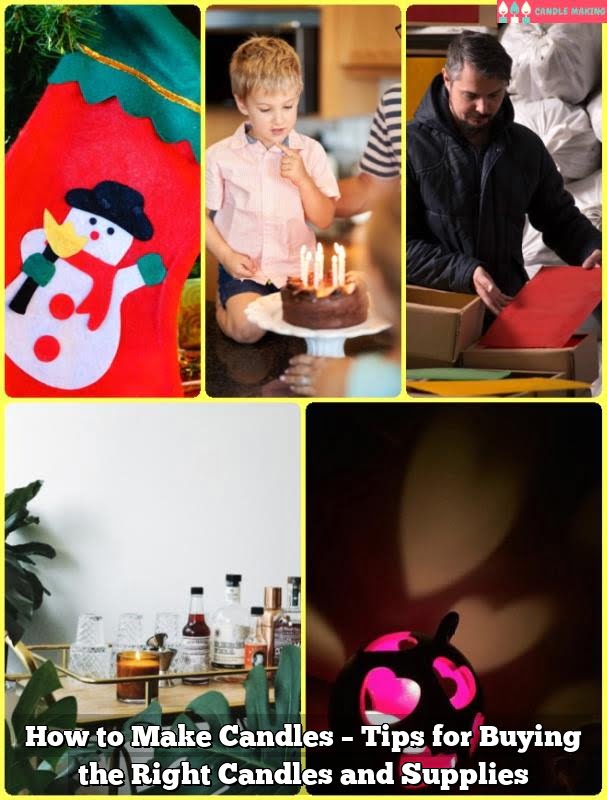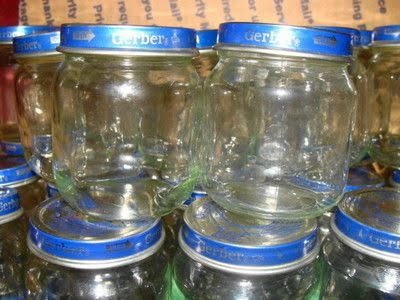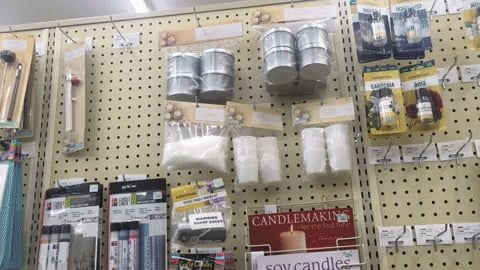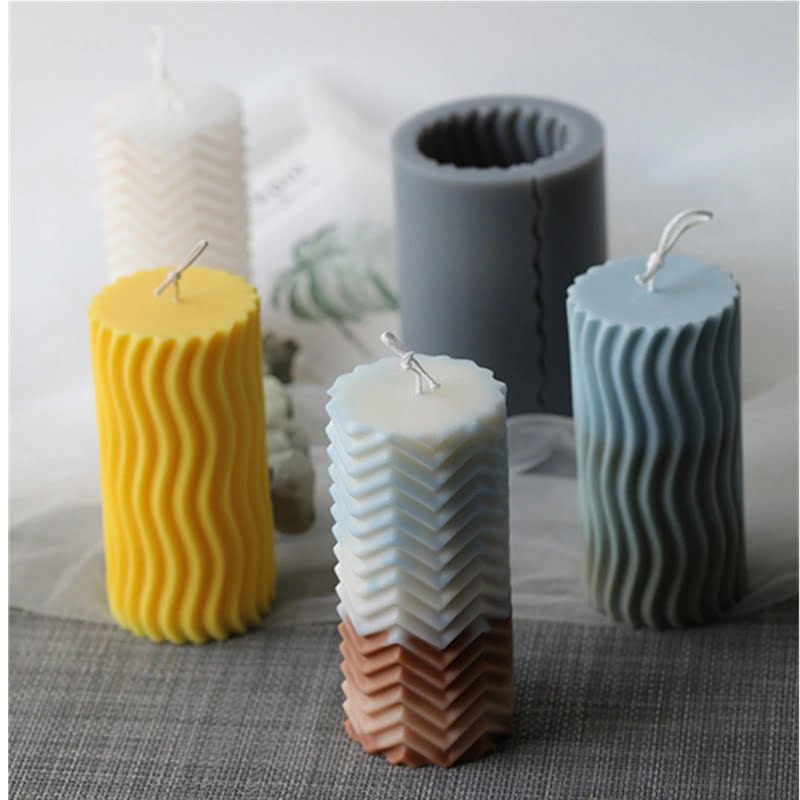Candle making is a popular hobby that combines creativity and practicality. Whether you want to make candles as gifts, create a calming ambiance in your home, or start a small business, knowing the right supplies is crucial. In this article, we will explore the essential tools and materials needed for making candles and guide you through the process of creating beautiful, fragrant candles from scratch.
For many people, candle making is not just a hobby; it is a therapeutic activity that allows them to express their creativity while also providing relaxation. The process of melting wax, adding scents and colors, and pouring it into molds or containers can be both satisfying and fun. Not only does candle making offer endless possibilities for unique designs, but it also gives individuals the opportunity to personalize scents and create candles that reflect their own style and taste.
To get started with candle making, you will need a few basic tools and materials. These include wax (such as soy or beeswax), fragrance oils or essential oils for scenting your candles, dyes or color blocks for adding vibrancy, wicks for burning, containers or molds to shape your candles, and safety equipment like gloves and aprons.
As you progress in your candle making journey, you may also want to explore advanced supplies such as decorative embeds or unique waxes that allow for more intricate designs.
In the following sections of this article, we will delve deeper into each aspect of candle making supplies. We will discuss different types of candles, provide recommendations on choosing the best wax type for your needs, explore fragrance and coloring options to enhance the aesthetics of your creations.
Additionally, we will cover wick selection tips for optimal burning performance and guide you in selecting suitable containers and molds. Lastly, we will emphasize the importance of safety measures when working with hot wax.
By the end of this article series on candle making supplies, you will be equipped with the knowledge and confidence to embark on your own candle making journey. So gather your materials, prepare your workspace, and let’s dive into the world of candle making.
The Basics
Pillar Candles
One of the most common types of candles is the pillar candle. These candles are typically freestanding and cylindrical in shape, with a wide range of sizes available. Pillar candles are versatile and can be used for both decorative purposes and as a source of light. They can be made from various types of wax, such as soy wax or beeswax, and can be left unscented or scented to add fragrance to your space.
Taper Candles
Taper candles are long, slender candles that are conical in shape. They are traditionally used for formal occasions, such as dinners or religious ceremonies. Taper candles are often made from paraffin wax as it provides a steady and even burn. These candles require taper candle holders to keep them upright while burning.
Jar Candles
Jar candles are a popular choice among candle makers due to their versatility and convenience. As the name suggests, these candles are poured into jars or containers, which not only serve as vessels but also protect against dripping wax. Jar candles can be made using different types of wax and come in various shapes and sizes. They are often used for everyday ambiance or as gifts because they are easy to customize through fragrances and colors.
Votive Candles
Votive candles are small, short-sized candles that fit into votive holders or small containers specifically designed for them. These candles burn for a shorter period compared to other types but can provide a warm and cozy atmosphere when clustered together. Votive candles can be scented or unscented and work well as decorations or accents during events or intimate gatherings.
Understanding the different types of candles allows you to choose the right type based on your needs and preferences. Whether you want decorative elements for special occasions, ambient lighting for relaxation, or fragrances to create a specific atmosphere, knowing the basics helps you make informed decisions when it comes to candle making.
Getting Started
Candle Making Basics
Before diving into the world of candle making, it is important to have a good understanding of the basics. Candle making involves melting wax, adding fragrance and color, selecting the right wick, and choosing suitable containers or molds. By familiarizing yourself with these essential tools and materials, you will be well-prepared to embark on your candle making journey.
The Essential Tools
To get started with candle making, there are a few essential tools that you will need. Here are the must-have items:
- Double Boiler: A double boiler is used for melting the wax safely and evenly. It consists of two pots – one larger pot filled with water and another smaller pot that fits inside it to hold the wax.
- Thermometer: A thermometer is crucial for monitoring the temperature of the melted wax. Different types of wax require different melting temperatures, so having an accurate thermometer ensures successful candle making.
- Pouring Pot: A pouring pot or pitcher is used to transfer the melted wax into containers or molds easily and without spills.
- Stirring Utensils: You’ll need dedicated utensils like a heat-resistant spoon or spatula for stirring the wax while melting and incorporating fragrance oils or dyes.
- Heat Source: An appropriate heat source such as an electric hot plate or stove is needed to melt the wax in the double boiler.
- Measuring Tools: Measuring cups and scales are necessary for precise measurements of wax, fragrance oils, and dyes.
- Work Surface Protection: It’s important to protect your work surface from spills and drips by using newspaper, a plastic tablecloth, or a silicone mat.
- Safety Equipment: Always prioritize safety when working with hot wax by wearing heat-resistant gloves to protect your hands from burns and safety goggles to shield your eyes from potential splatters.
Other Considerations
Aside from these essential tools, you may also want to consider investing in additional equipment for a more efficient and enjoyable candle making experience. Optional tools include a wax melter or warmer, which eliminates the need for the double boiler method, and a heat gun for removing air bubbles from the surface of your candles.
As you gather your essential tools and equipment, you will feel confident and ready to begin your candle making journey. Remember to read and follow instructions carefully and enjoy the process of creating beautiful, fragrant candles that you can proudly display or gift to others.
Wax Supplies
Wax is a crucial component in candle making as it determines the overall quality and performance of your candles. With a wide variety of waxes available on the market, it can be overwhelming to choose the best type for your specific needs and preferences. In this section, we will explore the different types of wax supplies commonly used in candle making and help you determine which one is best suited for your candles.
One of the most popular types of wax is soy wax. Soy wax is made from soybean oil and has gained popularity due to its renewable and eco-friendly nature. It burns cleaner than traditional paraffin wax and produces less soot and toxins, making it an excellent choice for those concerned about air quality. Soy wax also has a lower melting point, allowing for a longer burn time and enhanced fragrance release.
Another commonly used wax is paraffin wax. Paraffin wax is derived from petroleum byproducts and is known for its affordability and versatility. It has a higher melting point compared to soy wax, resulting in candles that have a more solid texture. Paraffin wax also holds fragrance well, making it ideal for scented candles.
For those looking for a vegan alternative, palm wax is an excellent option. Palm wax is derived from sustainably sourced palm oil and creates unique patterns when cooled due to its crystalline structure. It has a higher melting point than soy or paraffin waxes, resulting in longer burning times.
Other types of waxes include beeswax, which is known for its natural golden color and pleasant honey-like scent; coconut wax, which has a creamy texture and excellent scent throw; and gel wax, which creates translucent candles that resemble jelly or gelatin.
When choosing the type of wax for your candles, consider factors such as burn time, scent throw, appearance, cost-effectiveness, availability, and personal preference. Experimenting with different waxes can also be part of the fun and creativity of candle making, allowing you to discover new techniques and create unique candle designs.
Fragrance and Coloring
Adding fragrance and coloring to your candles is a crucial step in creating beautiful and aromatic creations. Adding these elements not only enhances the visual appeal of your candles but also adds an extra layer of sensory experience when they are burned. Here, we will discuss the different options available for adding scent and vibrancy to your candles.
Types of Fragrances
When it comes to fragrances for your candles, there are several options to choose from. You can opt for synthetic fragrances or natural essential oils, depending on your preference. Synthetic fragrances offer a wide variety of scents that can mimic almost any aroma you desire.
They are often more affordable and tend to have a stronger and longer-lasting scent throw when the candle is burned. On the other hand, natural essential oils provide a more authentic and pure scent experience. They come in various options such as lavender, eucalyptus, vanilla, citrus, and many more.
When selecting your fragrance, consider the type of candle you are making and its intended purpose. For example, if you’re creating a calming candle for relaxation or meditation, scents like lavender or chamomile would be ideal. If you want to create a vibrant and uplifting atmosphere, citrus or floral scents may be more suitable.
Coloring Options
Adding color to your candles brings vibrancy and visual appeal to your creations. There are different methods and materials available for coloring candles, including dyes and pigments:
- Candle Dye: Candle dyes are specifically formulated for coloring wax and come in various forms such as liquid dye, powder dye, chips, or blocks. They allow you to achieve vibrant colors without affecting the performance or burning quality of the candle.
- Pigments: Candle pigments are powdered colorants that can be used in combination with other materials like mica powders or liquid dyes to create custom colors and effects. They offer versatility in achieving unique and creative candle designs.
When selecting colors for your candles, consider the overall theme or purpose of your creation. Pastel shades can create a serene and calming ambiance, while bold and vibrant colors can add energy and excitement to any space.
Tips for Adding Fragrance and Color
To ensure that you achieve the desired scent and vibrancy in your candles, here are some tips to keep in mind:
- Measure accurately: Follow the recommended usage rates for fragrances and dyes according to the type of wax you are using. Overloading your candles with fragrance or color may affect their performance.
- Blend thoroughly: Whether you are adding fragrance or coloring, make sure to mix them thoroughly into the melted wax before pouring it into the molds or containers. This will help distribute the scent and color evenly throughout the candle.
- Experiment and test: Don’t be afraid to try different combinations of scents and colors to find your preferred balance. Keep records of your experiments so you can recreate successful blends in future batches.
By carefully selecting fragrances and coloring options, you can bring life, personality, and an enticing sensory experience to your homemade candles. Be creative, experiment, and enjoy the process of adding scent and vibrancy to your candle-making journey.
Wick Selection
Wick selection is a crucial step in candle making, as it directly affects the burning performance of your candles. The wick is responsible for carrying the melted wax up to the flame, allowing it to burn steadily and evenly.
Choosing the right wick for your candles depends on various factors such as the type of wax, diameter and height of the candle, desired burn time, and fragrance load. Here are some tips to help you find the perfect wick:
- Consider the diameter and height of your candle: The size of your candle will determine the thickness or “tab size” of the wick. Generally, thicker wicks are required for larger candles with wider diameters or taller heights to ensure that enough wax is supplied to sustain a steady flame.
- Take into account the type of wax used: Different types of wax have different melting points, which can affect how well the wick burns. For example, soy wax tends to require a larger wick compared to paraffin wax due to its lower melting point.
- Think about burn time: If you want your candles to have a longer burn time, you may need a thicker wick that allows more fuel (wax) to be consumed. On the other hand, if you prefer shorter burn times, a thinner wick will suffice.
In addition to these considerations, it is important to test different wicks before settling on one for your specific candle making project. Conducting burn tests with various wick sizes and types will give you a better idea of which one works best for optimal burning performance.
When conducting burn tests, make sure to record observations such as flame height, stability, and evenness of melt pool generation. This will help you determine which wick provides an even and controlled burn throughout the life of the candle.
Ultimately, finding the perfect wick for optimal burning is a process of trial and error. It may take some experimentation and testing to achieve the desired results, but once you find the right wick, your candles will burn beautifully, creating a pleasant and enjoyable experience for anyone who lights them.
Containers and Molds
When it comes to making candles, choosing the right containers and molds is an essential step in the process. The vessel you select will not only determine the shape and size of your candle but also play a significant role in its overall aesthetic appeal. There are various options available for containers and molds, each with its own unique advantages and considerations.
For container candles, glass jars are a popular choice due to their versatility and transparency. They come in different sizes and shapes, allowing you to create candles that fit your personal style. Glass jars also provide a clear view of the wax pool as it burns, creating a visually appealing experience for candle enthusiasts.
If you prefer a more rustic or vintage look, tin cans or mason jars can be great alternatives to glass containers. These materials add charm and character to your candles while still offering effective heat resistance.
In addition to containers, molds are another option for creating candles of various shapes and sizes. Silicone molds are flexible and easy to use, making them suitable for intricate designs such as flowers or geometric shapes. They can be reused multiple times and allow for easy removal of the finished candle.
On the other hand, metal molds provide stability and durability, making them ideal for producing pillar or votive candles. These molds often require prepping with mold release agents or can be fitted with removable bottoms for easy extraction.
Whether you choose containers or molds, it’s important to consider their compatibility with the type of wax you’re using. Some materials may have higher melting points that may cause glass or silicone to crack under extreme temperatures.
Safety Measures
Candle making can be a fun and rewarding hobby, but it is important to prioritize safety measures to protect yourself and your environment. Here are some essential safety precautions to follow when making candles:
- Ventilation: When working with candle making supplies, it is crucial to have proper ventilation in the area. This helps to prevent the build-up of potentially harmful fumes or vapors. Choose a well-ventilated room or use fans and open windows to maintain good airflow.
- Protective Clothing: Wearing appropriate clothing can safeguard your skin and clothes from any accidental spills or splatters. Long sleeves, pants, and closed-toed shoes are recommended to minimize the risk of burns or other injuries.
- Heat Sources: Candle making involves working with heat sources like melters, burners, and hot wax. Always exercise caution around these heat sources and keep flammable materials away from them. Never leave hot wax unattended and use double boiler systems or a heat-resistant surface to prevent accidents.
- Fire Safety: It’s essential to have fire safety measures in place when working with candles. Keep a fire extinguisher within easy reach in case of emergencies, and never leave burning candles unattended. Make sure that your work area is clear of any flammable materials, such as paper towels or excess supplies.
- First Aid Kit: Accidents can happen, so having a first aid kit on hand is important for immediate treatment of minor injuries like cuts or burns. Be prepared by stocking up on first aid supplies like bandages, antiseptic ointment, and burn cream.
Remember, safety should always be the top priority when engaging in any hobby, including candle making. By following these safety measures, you can enjoy the process while minimizing any potential risks or accidents.
| Safety Precautions | Description |
|---|---|
| Ventilation | Ensure good airflow in the working area to prevent the build-up of fumes or vapors. |
| Protective Clothing | Wear long sleeves, pants, and closed-toed shoes to protect against spills and burns. |
| Heat Sources | Exercise caution when using melters and hot wax, using double boiler systems or heat-resistant surfaces. Keep flammable materials away from heat sources. |
| Fire Safety | Have a fire extinguisher within easy reach, never leave burning candles unattended, and keep your work area clear of flammable materials. |
| First Aid Kit | Keep a well-stocked first aid kit with bandages, antiseptic ointment, burn cream, etc., for immediate treatment of minor injuries. |
Advanced Supplies
While basic candle making supplies are essential for getting started in this hobby, there is a world of possibilities when it comes to creating unique and eye-catching candle designs. By using advanced supplies, you can elevate your candle-making skills and create candles that are truly one-of-a-kind.
One advanced supply that can enhance your candle designs is glitter. Adding a touch of glitter to your candles can create a beautiful sparkle and make them stand out. You can choose from a variety of colors and sizes of glitter to suit your aesthetic preferences. Whether you sprinkle the glitter on top of the candle or mix it directly into the wax, it will add a mesmerizing shimmer when the candle is lit.
Another interesting material to experiment with is dried flowers or herbs. Embedding dried flowers or herbs within your candles can give them an elegant and natural look. You can choose flowers and herbs that complement the scent or color of your candles, creating a visually appealing combination. Just make sure that the flowers or herbs are completely dry before placing them in the wax to avoid any moisture-related issues.
For those who want to take their candle design to the next level, adding embeds can be an exciting option. Embeds are small objects that are placed inside the melted wax before it hardens, resulting in visually captivating candles. You can use various objects such as seashells, crystals, beads, or even small trinkets as embeds. The key is to ensure that these objects are flame-resistant and won’t cause any safety hazards when the candle is burned.
Conclusion
In conclusion, embarking on a candle making journey can be an exciting and fulfilling endeavor. Not only does it offer a creative outlet, but it also allows you to personalize your space with beautiful scents and unique designs. With the knowledge and information provided in this article, you are now equipped with the essential supplies and tools needed to get started.
Understanding the different types of candles, such as container candles, pillar candles, or tapered candles, allows you to choose which style fits your preferences and needs. Additionally, knowing the best type of wax for your desired candle consistency and burn time is crucial in achieving successful results. Whether you opt for soy wax, beeswax, or paraffin wax, each has its own benefits and considerations.
Adding fragrance and color to your candles enhances their aesthetic appeal. Experimenting with various scents and dyes adds vibrancy and personality to your creations. Alongside this, choosing the appropriate wick ensures optimal burning for a longer-lasting candle.
Furthermore, selecting the right containers or molds is essential in determining the shape and size of your candles. It’s important to consider factors such as heat resistance, durability, and aesthetics when choosing the vessels for your creations.
Lastly, always prioritize safety when engaging in candle making activities. Taking precautionary measures such as wearing protective gear like gloves and goggles can prevent accidents or injuries. Moreover, keeping a fire extinguisher nearby and working in a well-ventilated area will further ensure a safe environment.
With all these elements considered, you are now ready to embark on your candle making journey with confidence. Remember that this hobby allows for endless creativity while providing relaxation and personalization to any space. So go ahead – gather your supplies and let your imagination take flight as you create beautiful candles that bring joy to yourself and others.

Welcome to my candle making blog! In this blog, I will be sharing my tips and tricks for making candles. I will also be sharing some of my favorite recipes.

